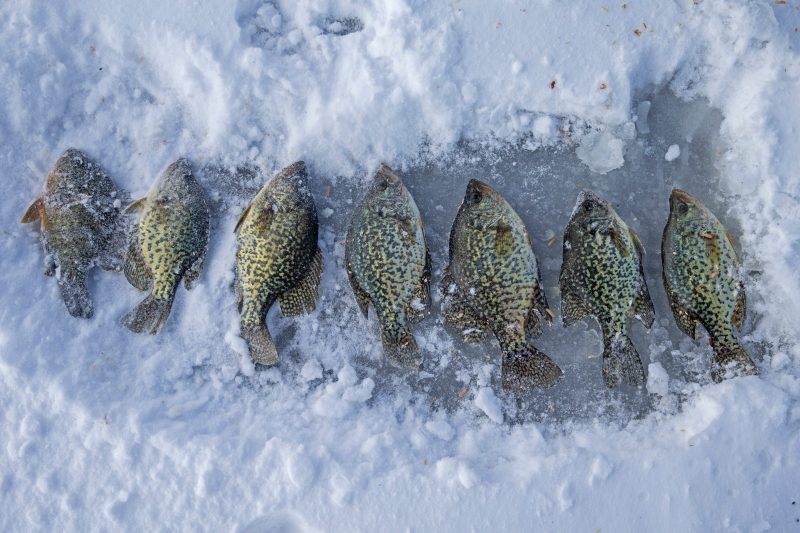Something was fishy about a record-breaking white crappie.
On Friday, the Kansas Department of Wildlife and Parks (KDWP) released a statement to local news outlet KSNT that a white crappie was found to have metal inside of it, voiding its status as heaviest catch in state history.
The white crappie was caught by angler Bobby Parkhurst in March and officials declared the fish broke the 59-year-old state record in April, calling the event a ‘catch-of-a-lifetime.’ The fish weighed 4.07 pounds on certified scales, measuring 18 inches long and 14 inches in girth.
‘As fisheries biologists, we get the chance to see a lot of big fish but this one is certainly for the books,’ John Reinke, assistant director of Fisheries for the KDWP, said in a statement at the time.
The previous record, set in 1964 with a catch by Frank Miller, was a white crappie weighing 4.02 pounds and measuring 17.5 inches long.
Parkhurst’s catch was removed from the record list in November. At the time of publication, the KDWP website has the 1964 catch listed as the record-holder.
‘Upon further review by KDWP officials, the crappie caught by Parkhurst could not be confirmed;’ KDWP said in an update to its initial press release, ‘therefore, the previous record for Kansas’ largest crappie still stands.’
Photo courtesy of Kansas Department of Wildlife and Parks.
“The fish appeared normal and healthy, and was accurately identified by staff; However, had the application been filled out accurately by the angler, it would have not qualified as a state record,” KDWP spokeswoman Nadia Marji told the local publication.
“I did it the whole way they wanted me to do it,” Parkhurst said, noting that he didn’t think he had a record when he caught the fish, but was encouraged by his family and friends to submit it. “I went through the procedures, I wrote down what I caught it on, I did everything they wanted me to do by the book. I did everything I was supposed to do. Their biologists looked at it more than once.”
On Friday, authorities provided information as to why the new crappie was disqualified. A witness tipped the KDWP that the initial weight of the fish was 3.73 pounds.
“To preserve the integrity of KDWP’s state record program, KDWP Game Wardens met with the angler who voluntarily presented his fish for re-examination,” Marji said. “When staff used a handheld metal detector to scan the fish, the device detected the presence of metal.”
The fish was then taken to a local zoo where an X-ray revealed two steel ball bearings in its stomach.
A representative for the Shawnee County District Attorney’s Office said there is insufficient evidence to bring charges against Parkhurst in a criminal case.






